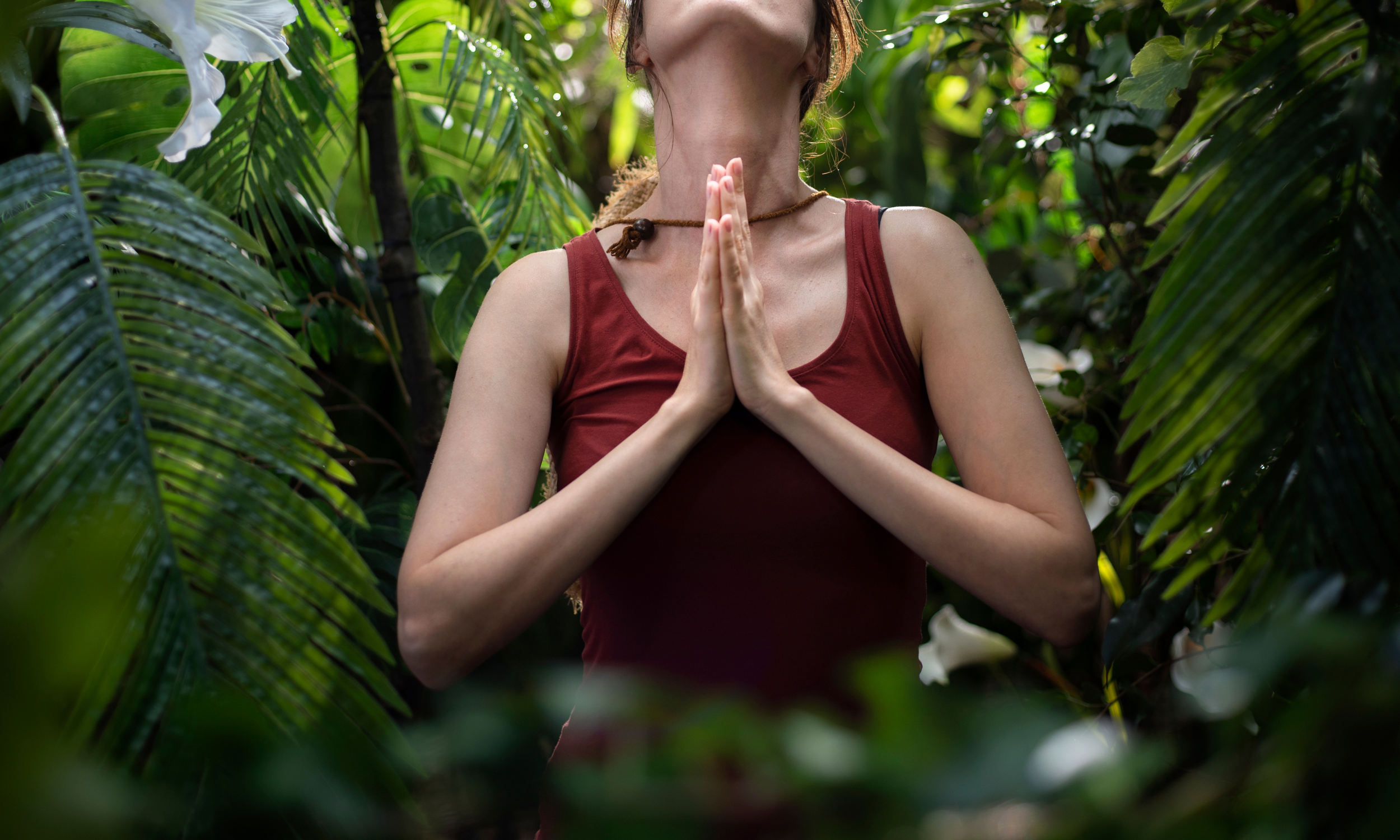
Pranayama
Pranayama: the Sanskrit word for breathwork.
It means control and lengthening of the breath.
The aim of Pranayama
The aim of Pranayama is the control of ‘Prana’ through the control of the breath, which is the external manifestation of the gross Prana. The premise is that through controlling the breath, one controls the mind, and the inner life currents or vital forces.
According to Yogic philosophy one’s life span is measured by the total number of breaths rather than the number of years. Hence slow steady breathing greatly increases longevity as well as having a reciprocal relationship with the heart.
A necessary precursor to beginning this work is establishing deep even inhalations and exhalations, and the ability to utilize the lungs fully. This is achieved with a Vinyasa Krama asana practice, through the different arm and chest movements synchronized with slow conscious breathing. These movements increase lung and vital capacity.

Breath is the link between body and mind.
The focus is always to maintain absolute attention with the slow gentle flow of breath. This is ‘Awareness’.
Cultivating awareness or being fully present in the moment is the most empowering quality available to us, and something which when incorporated into daily activities will enhance every aspect of your life.
Breathwork will give you:
Increased equanimity and tolerance to the ups and downs of life.
Greater concentration and mental application to any task.
A balanced nervous system.
Stress reduction.
And cultivates happiness and fulfillment.
Patanjali’s 8 limbs of yoga
According to Patanjali’s 8 limbs of yoga, there is a definite order of requirements prior to starting a pranayama practice. These are reducing mental tensions primarily through becoming honest and less violent in thought, word and deed to yourself/ others/ the world around and your life.
Then one must also reduce physical tensions through an asana practice such that you can sit comfortably in order to focus for half and hour ( and eventually for longer), with full attention on the breath.
The type of Pranayama practice: an individual process
The type of Pranayama practice you do and your progression is entirely individual. Every stage will cultivate beneficial mental and physiological states.
According to Yogic Philosophy, the depth and steadiness of breath is a direct reflection of mental and emotional states. Accordingly, learning to consicously control depth and evenness of breath steadies the mind. Real happiness is a peaceful mind. This is often chanted as ‘Om Shanti Shanti Shanti’. or ‘I wish mental peace and happiness for myself, for others and for the entire world’.
Madeleine will guide you step by step in your Pranayama practice to do at a quiet moment in your day.
Please contact for more information


